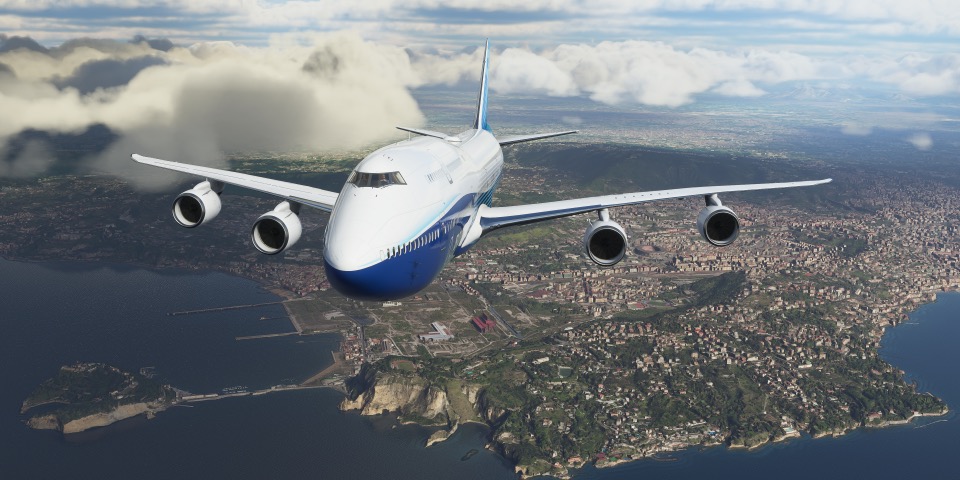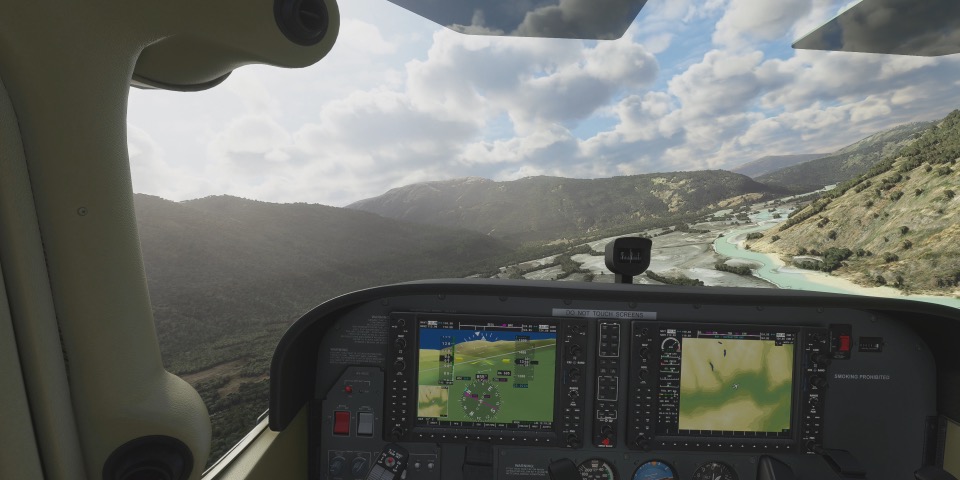
Taking flight as Microsoft Flight Simulator returns to the skies
by Stefan LOnce a mainstay of Microsoft’s gaming business, it’s now been 13 years since the last Microsoft Flight Simulator. Now with Asobo Studio at the helm, Microsoft are looking to right that wrong, doing so with a brand new and enticing approach.
Compared to a game released before the dawn of smartphones, when Google Earth still sprung to mind before Google Maps did, Flight Simulator has an awful lot of new technology to lean on. For one thing, the whole world is streaming into your game in real time, letting you fly way off without a care for map limits thanks to the Petabytes of data captured by Microsoft for Bing. Some of that has been done with pure satellite imagery, elsewhere it’s been combined with images captured from planes flying over a city or town, and all of that has then been crunched down by the Azure AI to create the 3D world, spotting the roads for cars to drive down, where trees exist so that they can be affected by the weather, where streams run so that water can flow.
If you’re expecting photorealism, it’s not quite there. Because of how the 3D world has been captured and then generated, it feels more like the 3D map views that you have in Apple Maps in terms of geometry. There’s road traffic down there, but it’s following generated paths that can sometimes see cars and trucks Skyrim their way up hills. A fair bit of this is also dependent on that hook to the Azure cloud – wait, didn’t Microsoft bang on about the cloud and gaming at one point? – but you will be able to play offline, losing things like photogrammetric data and so diminishing some of the graphical effects.

That doesn’t take away from how impressive it is though, especially when factoring in the changing time of day and weather effects. It’s this that really makes the game look spectacular, and cities go from basking in the sun to lighting up to continue hustling and bustling in the moonlight. But forget what’s thousands of feet below you (unless you really want to try and fly sideways through some skyscrapers – which you obviously do), you’ll spend most of your time way up amongst the gorgeous clouds. The weather can be set however you see fit – if you want to fly at dusk in Rome, you can, or you might want to try to land in the fog at Heathrow – but you can also flip to the real world conditions at any time that you’re flying. Sure, you can set the weather how you see fit, but there’s something weirdly magical about being able to visit real time weather around the world.
It’s wonderful to just be able to fly around and chill out as you explore different corners of the world, but that would be to ignore the “Simulator” side of the title. I went hands on with a ludicrously fully-featured flight controller. Forget just grabbing a joystick and plugging that in, here I was playing with a realistic feeling yoke from Honeycomb, Saitek throttle control and Thrustmaster’s rudder pedals. Needless to say I didn’t have a clue how to use all of this, but was given some help with the throttle and guidance from one of Asobo’s developers.
Starting off by flying over Naples, I simply floated through the world and got a feel for the gentler side of the game, flicking between camera views and soaking in the environment, but there’s also a range of challenges to be featured in the game. A landing challenge at Courcheval Altiport, a tiny little runway up in the French Alps, is a real test for the game’s simulation.

This is one of the most challenging airports to land at in the world with an upward-sloping runway amidst the mountains, forcing you to take a curved approach, manage the throttle and plant your plane without even lighting aids to help in inclement weather that alone would surely see many flights abandoned. The game gives you a tutorial for the path you should take, with your landing then scored by how well you followed the path, how accurately you hit the touch down zone, speed, and so on. I managed to get the plane down, but needless to say that my score was not going to trouble any leaderboards.
Of course, with the game coming to Xbox One as well as PC, it’s going to be fascinating to see how it stacks up on much more humble gaming hardware. There’s certainly going to be enough simulation settings to fiddle with for if you’re just playing with a controller or a relatively basic flight stick, but how it holds up graphically when so much of the game is streamed in from Microsoft’s servers will also be interesting to see. Can it compete with a top-tier PC, as I was able to play on?
Needless to say, I came away from Flight Simulator very impressed. The series evolved a great deal from its humble beginnings in the 80s through to Flight Simulator X in 2006, and that style of flight sim continued with games like X-Plane and Aerofly, but Flight Simulator is something else entirely with its worldwide scope. This is absolutely one to keep an eye on in 2020.